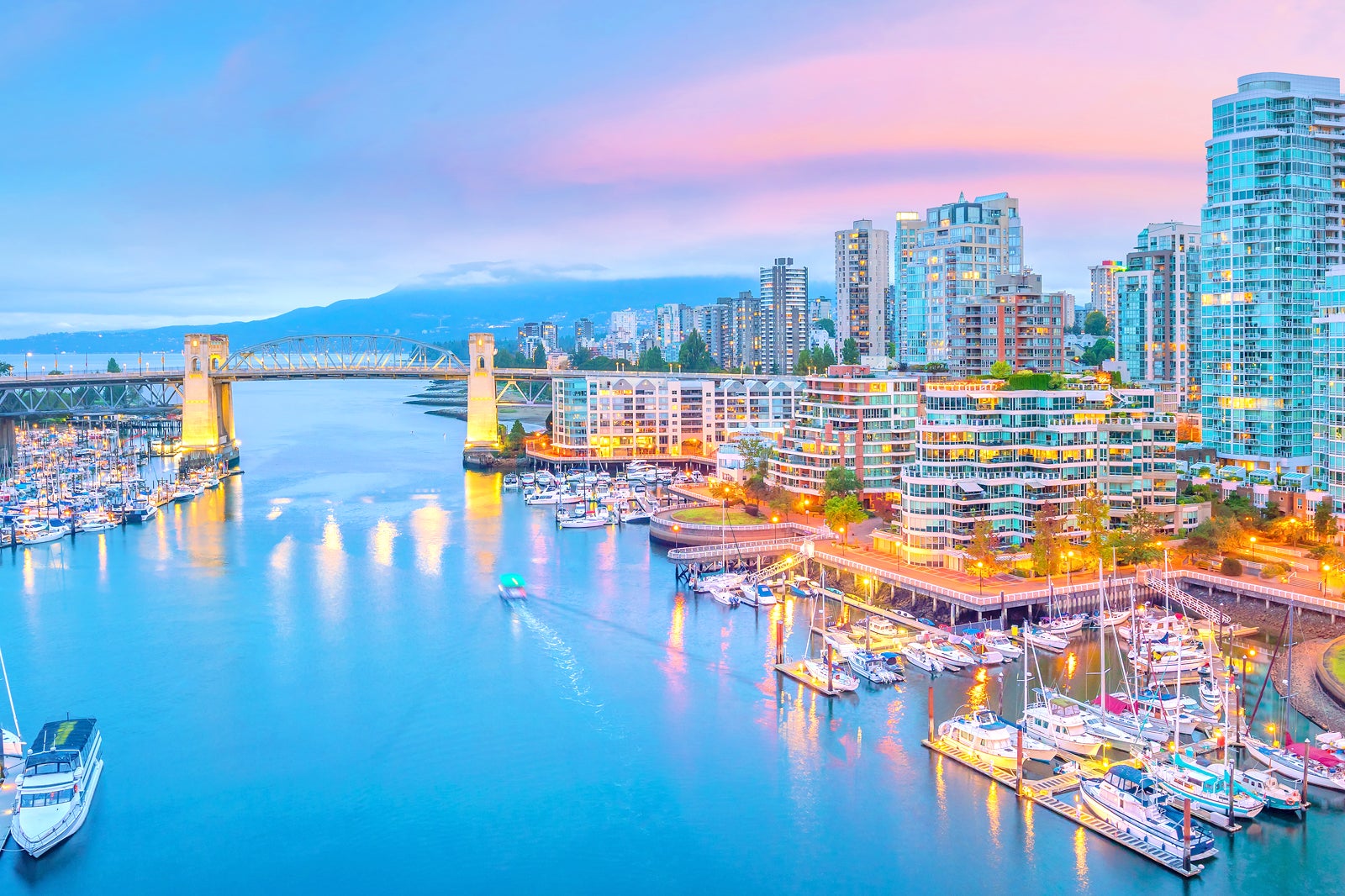Table Of Content
- The Best Time to Visit Canada
- Weather in Canada in April
- When is the Best Time to Visit Canada for Good Weather?
- How do you avoid cruise crowds in Canada and New England?
- Best time to visit Canada by season
- Trip ideas and travel guides for exploring Canada
- Precipitation (Rain or Snow)
- Best Season to Visit Canada

Canada is a popular country to visit any time of the year, but it can be a very different travel experience depending on the season that you choose to visit. For a more predictable display of fall colors, Ontario and Quebec are prime options, with the foliage lasting upwards of two months in September and October. Consider traveling on Via Rail from Quebec City to Montreal, as the train passes through trees adorned with golden hues. Regarded as many Canadian’s favorite season, autumn is a celebration of bountiful harvests, the changing seasons, and vibrant foliage that reflects off the lakes and rivers. While the amber shades of fall can be found throughout Canada, there are some top places to enjoy it. For those not averse to a little winter chill, the snow-accustomed Canadians offer an alternative winter culture.
The Best Time to Visit Canada
But, even with the season’s unpredictable nature, I would highly recommend visiting Canada in the fall. Another great destination in Canada for July and August is Vancouver Island. Located just west of Vancouver, the island has 3,400 kilometres (2,112 miles) of coastline to explore, with beautiful beaches and old-growth rainforests, as well as the historic city of Victoria. Although snowfall in the mountains can be unpredictable, most of the trails in the mountains remains accessible until around mid-September, when snow will commonly start to fall more frequently again. And, the backcountry isn’t always completely accessible until a bit later in the summer due to snow.

Weather in Canada in April
The grizzly bear-watching season begins between May and June as they emerge from hibernation. At the same time, humpback whales are chasing herring as they migrate north. In July and August, you can visit the Arctic regions to see caribou, foxes, polar bears and whales off the coastal areas. September is the best month to see grizzlies at their most active, cramming in the food ready for hibernation and chasing wild salmon as they travel upstream to spawn. October and November are the best months for viewing polar bears as they gather near Churchill for the sea ice.
When is the Best Time to Visit Canada for Good Weather?
Expect to wear socks and comfy sneakers, boots, or other enclosed shoes in port and maybe even on the ship on colder days. Bring a hat or knit headband to keep your ears warm — especially in April and October. A raincoat with hood and umbrella are must-haves during the rainiest months of the season. If you aren’t planning your cruise to see the fall leaves and avoiding crowds is a priority, your best bet is to sail in April, May, or June.

How do you avoid cruise crowds in Canada and New England?
October starts to get colder still, but offers the chance to spot polar bears as they make their way back from their summertime habitat. The best time to visit Canada is during the summer months, when sunny days and pleasant temperatures are the norm. Despite Canada’s size, weather patterns are largely the same across the country, with defined seasons similar to those in Europe. Coastal regions are usually more temperate than prairie provinces, and mountain ranges attract higher rainfall and snow in some areas than others. However, it’s cold everywhere in winter and warm in most locations in summer. This is an excellent time of year to visit Canada for winter sports such as skating and skiing.
So, on both the east and west coasts expect average temperatures in the low 70s °F. Speak to our travel experts to discover what would be the best time to visit Canada for you. With our tailor-made itineraries you can be sure you will truly experience the best of what this spectacular country has to offer. Some of the best skiing can be found in April, thanks to the clear and sunny spring skies. As temperatures rise and snow continues to melt, some areas may be a little muddy. The West Coast generally has the best weather for those keen to move into warmer (and likely greener) pastures.
There are also summer solstice celebrations, Pride and events for Canada’s Multiculturalism Day on 27 June. The best time to see the Northern Lights in Canada is during winter (November to March). However, in some areas, such as Alberta, Ontario and the Yukon, the lights may be visible in autumn (September to November). For winter fun in Canada, the best snow is from December to March, although this can vary depending on the year’s predicted snowfall.
Precipitation (Rain or Snow)
We use Discover Car Hire for comparing car prices to find the best deal. Here's when to visit Canada, whether you want to ski, hike, see the northern lights, or spot wildlife. Daily highs (averaged for the month) usually give the best indication of the weather.
The increased hours of sunshine mean there’s extra time to get out and hit the slopes. It’s particularly good if you want to head to the big ski resorts around Mont Tremblant, Banff or Whistler. The weather is cold and there will probably be snow, but if you're prepared, you can still enjoy Canada's cities and lots of outdoor activities come December. Before and just after Christmas offers visitors some of the best opportunities for airfare and hotel bargains—especially if you like to ski. The off-season in Canada lasts from November until April when the weather is particularly cold. During this time, you will find far fewer crowds—unless you're visiting a ski resort!
This is peak fall foliage time, when you can witness the most vibrant hues of red, orange and gold. There’s stunning fall foliage across the country, and you don’t even have to leave the city to see it. It’s also harvest season so there are plenty of farmers markets and excellent produce. This makes it a great time to explore the local food scene and sample seasonal treats, like pumpkin spice lattes. From my experience, I’ve had some really hot and sunny weather in Canada in June. But I’ve also had years with a lot of rain and cooler spring-like temperatures throughout the month.
Whistler is North America’s largest ski resort, Ottawa’s Rideau Canal hosts the world’s biggest skating rink, and Quebec City’s February carnival is one of the planet’s most renowned winter festivals. The busiest month for tourism in Canada is July, followed by August and June. Prices for hotels and flights will be most expensive during these months, though you can save if you purchase well in advance. Those willing to visit at these times will likely find it the least expensive month. The cheapest time to visit Canada is during the low season months. The ski season in Canada is in full swing between Late November and late April/early May.
Many factors affect Northern Lights sightings, but clear, dark nights between 10 pm and 2 am offer the best chance. See the Northern Lights at the Canadian Rockies from November to March on a guided small group trip. Or, if you want to experience larch season, you should visit the Rocky Mountains in September. However, you can expect to see a gorgeous display beginning at the end of September and into the first week of October in places like Bar Harbor, Nova Scotia and Quebec City. September brings the busy fall and leaf-peeping season, with more options for ships and itineraries in New England and Canada.
The best Canadian rock bands of all time - Yardbarker
The best Canadian rock bands of all time.
Posted: Mon, 22 Apr 2024 00:30:01 GMT [source]
British Columbia has the most consistent weather when compared to other regions of Canada. Although, you’ll definitely get weather extremes that result in some of the wettest and driest places in Canada. See, every May in Canada’s capital that are millions of tulips planted!
But there can also be cold weather, rain, and even the odd snowfall. Especially closer to the Arctic Circle, snow may persist into late spring or even early summer. Two of the warmest places in winter are Victoria and Vancouver in western Canada, with daytime averages around 7 to 9°C (45 to 48°F). But milder temperatures mean that these cities don’t get much snow, instead experiencing a lot of rain throughout the colder months. In Canada’s more northern regions, especially near the Arctic Circle, the summer can be much shorter and cooler, with unpredictable weather. You can expect average daytime temperatures to range from around 5 to 15°C (41 to 59°F) in places like the Yukon and Northwest Territories.
June – August is the busiest season for tourism in Canada, so lodging and other accommodations may cost more than usual. It is a great time to go outdoors to explore natural parks and marvel at the incredible fall foliage that some places in the country boast. If that’s your thing, then this is a great time of year to visit Canada; the fall colors make it a popular place in October. March should, in theory, be spring, and in many places, things are starting to warm up a little bit.
If dry weather is what you’re after, the months with the lowest chance of significant precipitation in Canada are February, March, and then January. Note that we define “significant precipitation” as .1 inches or more in this section. For example, on the week of February 5th there is 1 day of precipitation on average. By contrast, it’s most likely to rain or snow in mid June with an average of 1 days of significant precipitation the week of June 18th.
No comments:
Post a Comment